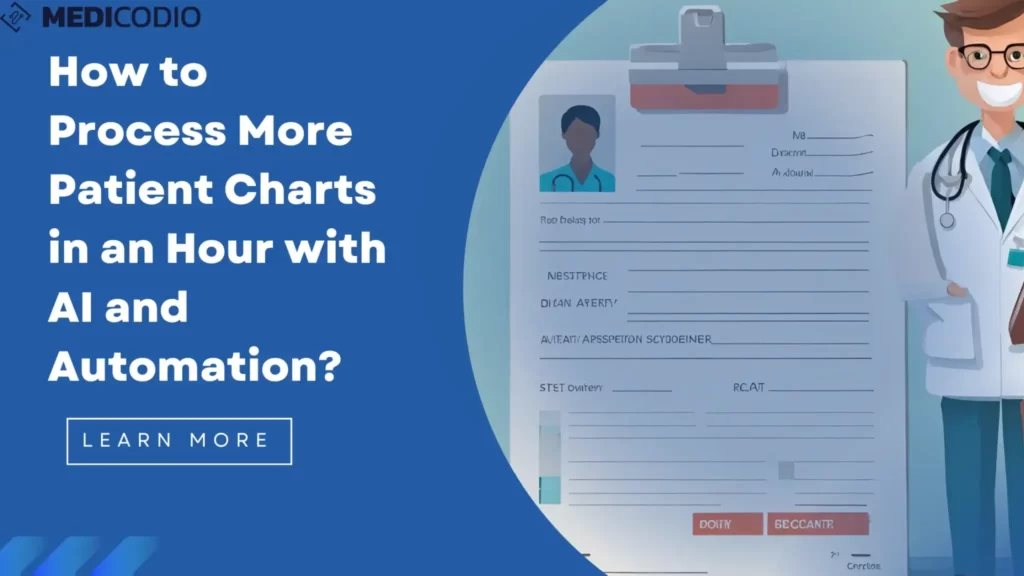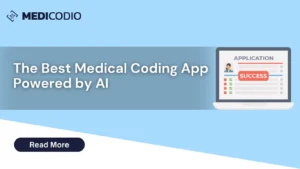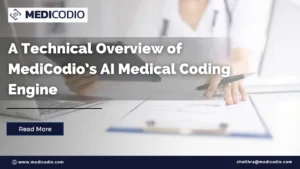Medical coding is a vital component of the healthcare revenue cycle management process. The accuracy and efficiency of medical coding are important not only for ensuring proper reimbursement but also for maintaining the integrity of patient charts. To meet the increasing demands of the healthcare industry, medical coders must explore innovative ways to enhance their productivity. One of the best ways is harnessing the power of Artificial Intelligence (AI) and automation. Based on our survey, the majority of senior medical coders are paid on an hourly basis. In this blog, we will delve into how medical coders can process more patient charts in an hour by leveraging AI and automation technologies.

-
- Streamlining the Documentation Process
AI-driven solutions can significantly improve the documentation process. Natural Language Processing (NLP) algorithms can parse through medical records, extracting relevant information and categorizing it. This automation reduces the time spent sifting through lengthy patient charts and allows medical coders to focus on coding tasks. By streamlining documentation, coders can process more charts in less time while maintaining data accuracy.
-
- Real-time Coding Assistance
AI-powered coding assistance tools can work in real-time, providing medical coders with instant code suggestions. These tools can analyze the clinical documentation as it’s being created, flagging potential discrepancies and guiding the coder toward accurate code selections. This not only accelerates the coding process but also helps coders avoid costly errors and minimize the need for time-consuming audits and reviews.
-
- Automated Code Assignment
One of the most time-consuming aspects of medical coding is assigning appropriate codes to diagnoses and procedures. AI algorithms can automate this process by matching the clinical documentation to the most relevant codes. Coders can then review and approve these suggestions, saving substantial time compared to manual code assignments. With automated code assignment, medical coders can process a higher volume of charts in a single hour.
-
- Enhanced Accuracy
AI technologies are well-equipped to enhance the accuracy of medical coding. Machine learning models can be trained on vast datasets of medical records and coding guidelines, which helps them recognize patterns and specific criteria for coding. This results in fewer coding errors and reduced back-and-forth communication with healthcare providers to clarify codes, ultimately boosting productivity.
-
- Intelligent Prioritization
Not all medical records are created equal in terms of complexity. AI algorithms can intelligently prioritize patient charts, ensuring that coders tackle the most challenging cases first or delegate simpler charts to less experienced staff. This dynamic allocation of work optimizes the efficiency of the coding team, allowing them to process more charts in an hour without compromising quality.
-
- Automated Claim Scrutiny
Medical coders can spend a significant amount of time reviewing and scrutinizing claims for accuracy and compliance. AI-powered tools can automate this process, flagging potential issues, and ensuring that claims are submitted error-free. This reduces the time spent on post-coding claim review, allowing coders to focus on their primary task of coding medical charts.
-
- Continuous Learning and Improvement
AI and automation technologies can provide medical coders with ongoing learning resources and updates. They can keep coders informed about changes in coding guidelines, regulations, and best practices. By staying up to date, coders can code more efficiently and with greater accuracy, leading to increased chart processing capacity.
-
- Customization and Flexibility
AI and automation solutions can be tailored to suit the specific needs of a medical coding team. Coders can define their preferences, workflows, and coding guidelines within the system, ensuring that the technology aligns with their unique requirements. This customization ensures that the technology supports coders in a way that enhances their productivity and reduces any potential resistance to change.
Conclusion
In an era where healthcare demands are rising, medical coders are under pressure to process an increasing number of charts while maintaining accuracy. AI and automation are invaluable tools that can help coders meet this challenge. By streamlining the documentation process, providing real-time coding assistance, automating code assignment, enhancing accuracy, intelligently prioritizing work, automating claim scrutiny, and facilitating continuous learning, these technologies empower medical coders to process more charts in an hour without compromising the quality of their work. With customization and flexibility, AI and automation solutions can be seamlessly integrated into the existing workflow, making the transition to these technologies both smooth and rewarding. As the healthcare industry continues to evolve, medical coders who embrace AI and automation will find themselves better equipped to handle the growing demands and complexities of their profession.
#ushealthcare #medicalbillingservices #medicalcodingandbilling #rcmservices #cptcodes #icd10 #hospitals #GeneratveAI #ArtificialIntelligence #medicodio





